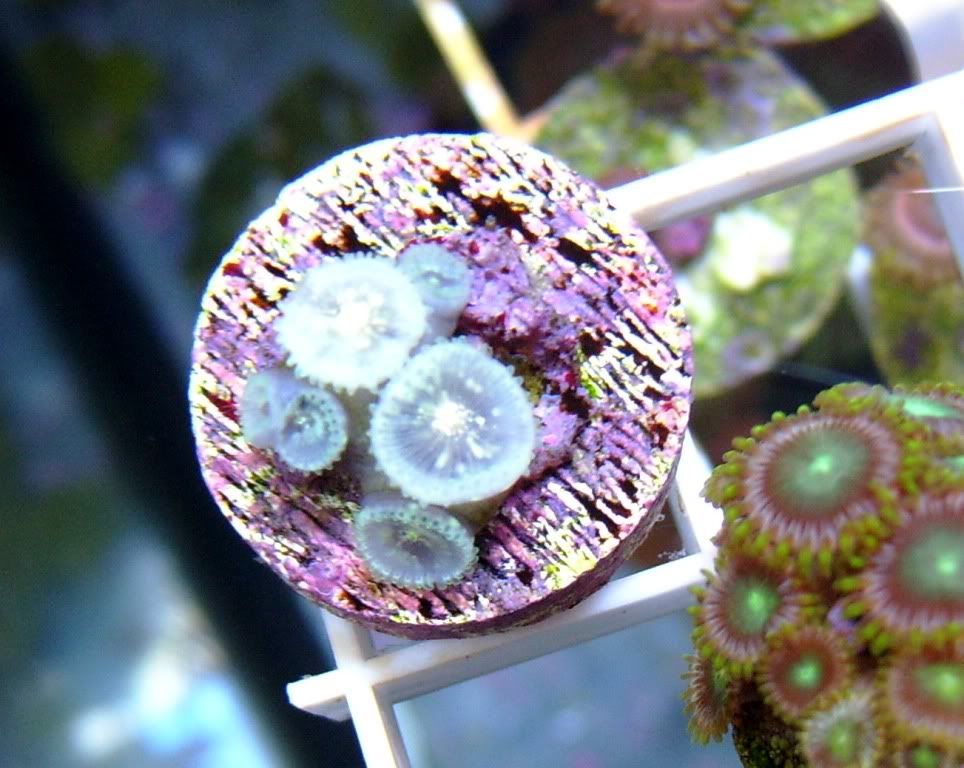Treating a frag that was totally closed up, 2 polyps, white, basically melting away.
During dips I rubbed off what seemed to be a dead layer of outer skin and they started to open. Still no color. Now I checked and 4 new polyps have grown. Should be dead?
Anyone see this before?
GregH


During dips I rubbed off what seemed to be a dead layer of outer skin and they started to open. Still no color. Now I checked and 4 new polyps have grown. Should be dead?
Anyone see this before?
GregH



